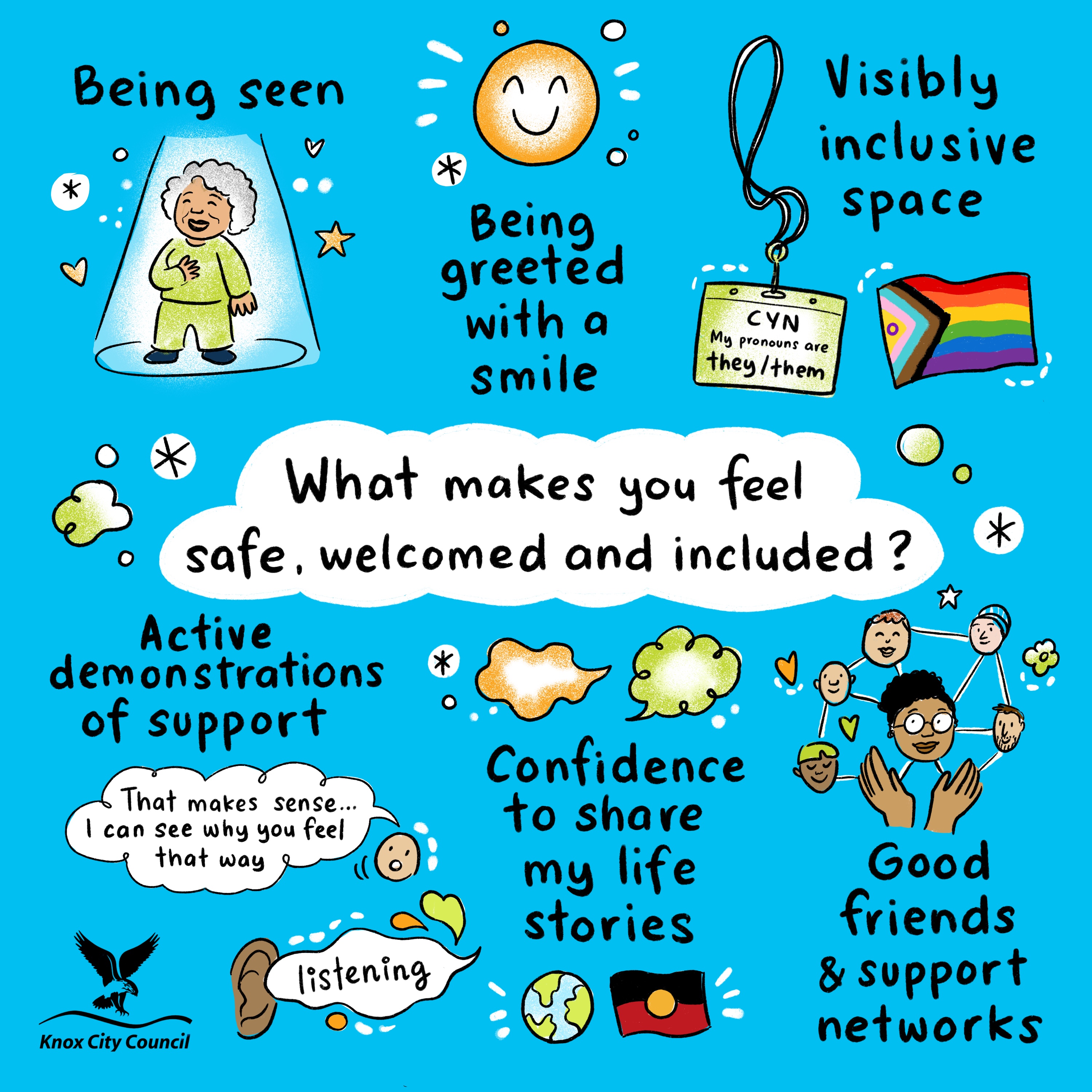The Knox community has shared how inclusion, feeling seen and forming meaningful connections support positive mental health and wellbeing.
A series of valuable conversations with diverse members of our community have unearthed some common themes for how Council, and the Knox community more broadly, can support one another to feel included, valued and connected.
The social benefits of creating an inclusive environment free from discrimination are well known, but the further impact this can have on improving people’s wellbeing and mental health is significant.
However, simple actions can make a huge difference. For many, visibility is the first step to feeling included and welcomed. A younger resident, who identifies as gender diverse, said “when businesses display posters and stickers, or if someone is wearing a rainbow lanyard or badge, it is the first indicator that it is a safe place for me.”
Other simple actions such as not assuming pronouns when speaking to someone or displaying inclusive images such as diverse families can help people of different backgrounds to feel seen and welcome.
Members of our multicultural communities described being aware of their “otherness,” while a resident who experiences mental ill health explained that they feel welcomed by “knowing that those around me will be patient” and they will still be “given access to opportunities and experiences that other people who don’t have mental ill health are provided.”
Checking our assumptions about others can also include the way we view and treat people of different cultural backgrounds, ages and abilities. Instead of assuming an older person won’t understand a piece of technology, or that someone of a different cultural background doesn’t speak English, approaching people without pre-judging allows them to feel safe and included.
Creating physical spaces that allow more people to participate in the community is an important part of this. From maintaining safe and clean parks and reserves, to ensuring the accessibility of our buildings, to incorporating more female and multi-purpose change rooms and gender-neutral bathrooms in facilities; Council too has an integral part to play in driving inclusion.
In partnership with a local aged care facility one Council kindergarten has undertaken an intergenerational activities program, building respectful connections between our oldest and youngest residents and promoting positive perceptions of both young people and of ageing.
Our community said that while people are becoming more understanding and knowledgeable about mental health issues and the support and resources available are increasing, there is still inconsistency in the language and attitudes towards mental health which can lead to stigma and discrimination.
Everyone can play a part in this by being considerate of the language they use and calling out poor behaviour when they see it – such as casual use of terms like ‘OCD’ or ‘anxiety’, or using ‘crazy’ as negative descriptor. Mental health stigma, like any form of discrimination, has a direct link to mental health by creating a sense of exclusion, isolation and shame.
October 10 is World Mental Health Day. The World Health Organisation explains that everyone has “the right to be protected from mental health risks, the right to available, accessible, acceptable, and good quality care, and the right to liberty, independence and inclusion in the community.” Visit the website to find out more:
If you or someone you know needs support, help is available. Visit our webpage for information on local services and resources:







